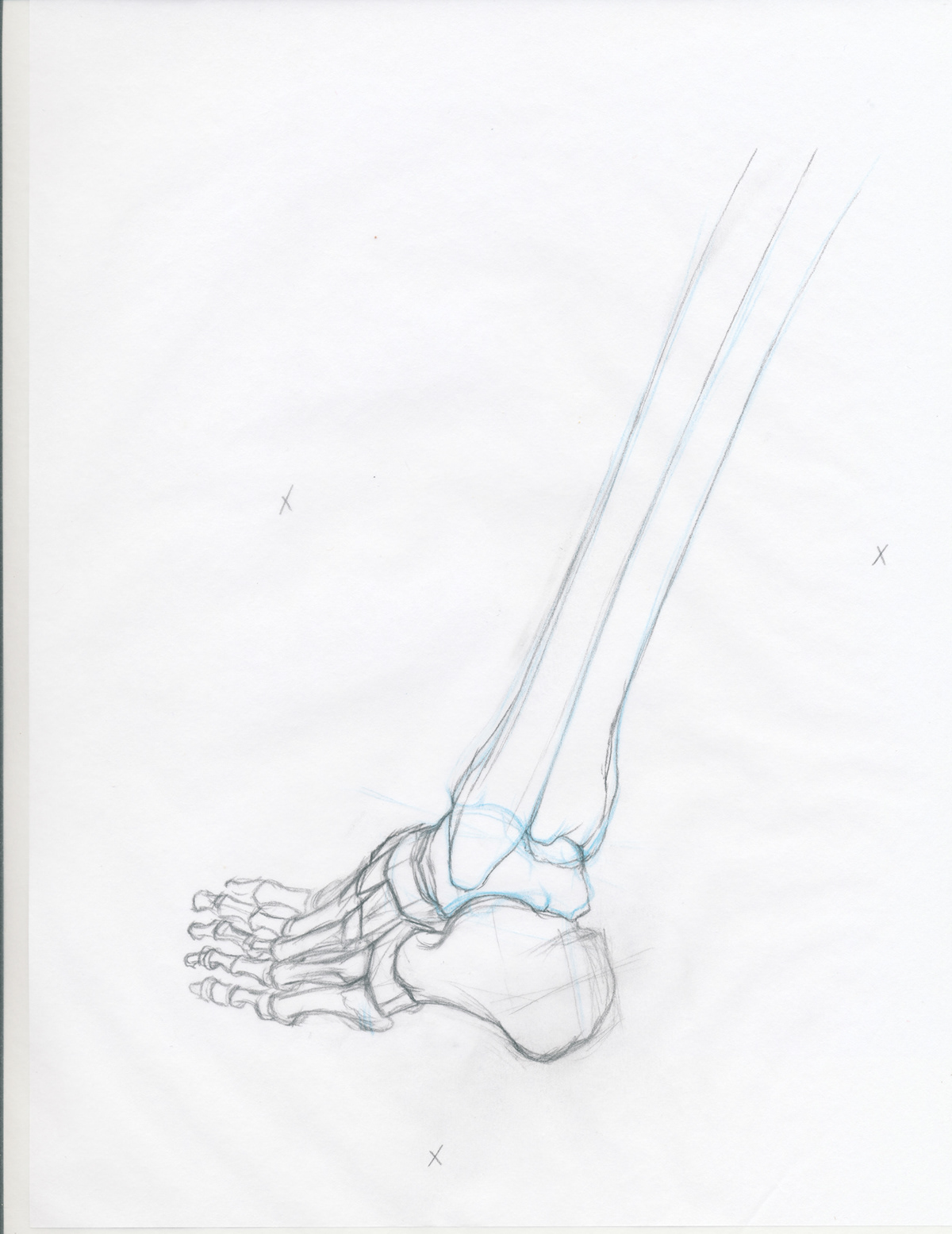
A nice, dynamic fibulo-calcaneal ligament tear (classic ankle sprain).
This is the start of colouring. There's a bit of a leap between this image and the completed one. I like to keep a lot of my elements separate. With medical stuff, you never know if sometime in the future you'll want the same image, minus the muscles and the ligaments, or you never know if you'll want to see through something. Often it's anticipating what my clients might want. So just about everything is it's own layer group: each individual bone, each muscle and tendon, shadows and highlight etc.
So much of this type of works is a) very complex and b) has so many layers to "see" though that you can't possibly get it all put together in one drawing. My secret weapon is tracing paper. I call it "analog photoshop". I get one feature pretty much laid out, say the rough bones (below). Then, using a separate piece of paper I build on that adding one bone or muscle at a time. Scanning each, they get composited in photoshop with each layer multiplied over top of the other. In the image above, I've colour coded some of the layers to help figure out what's what. It makes for a drawing that is very complex, but can simultanesouly be broken down and simplified. The following images will all get compososited together before colouring starts.

Rough leg bones used to simply sort out approximately where everything is. Not a lot of detail here.

These are the ligaments. They were traced over top of the good bones (not shown). You'll notice a few 'X's on the paper. Those simply act as registration marks to line up the tracings both when I'm tracing and when I'm trying to put everything together in p-shop.

This is some of the muscle and tendons. I knew I wasn't going to be so concerned with the anterior muscles like tib. ant., more fibularis etc. Sometimes I even write on the paper what "layer" it is just so I know what's currently turned on in photoshop. Obviously I get rid of that when I'm finishing up.

The shoe! Had to put my foot in the shoe.


